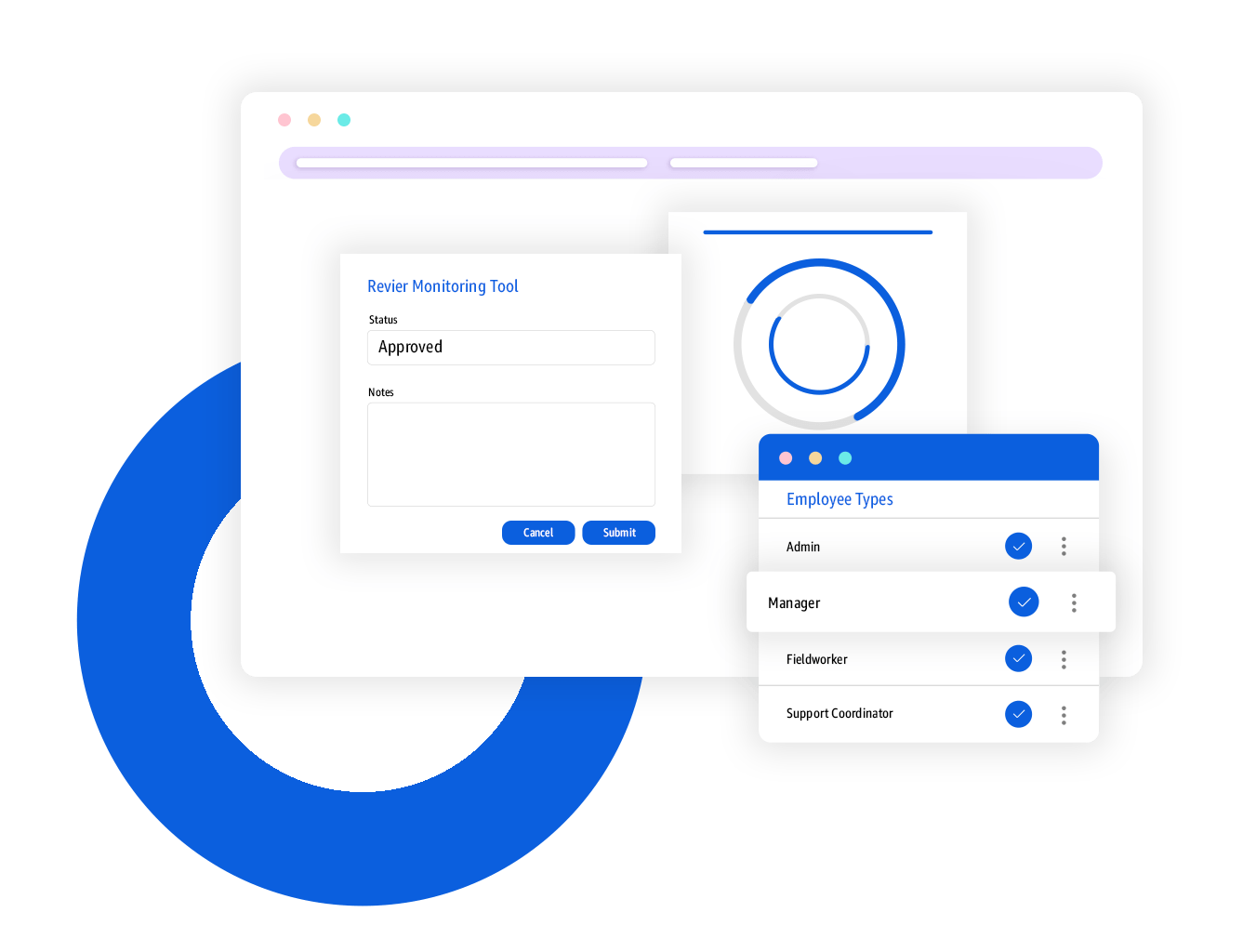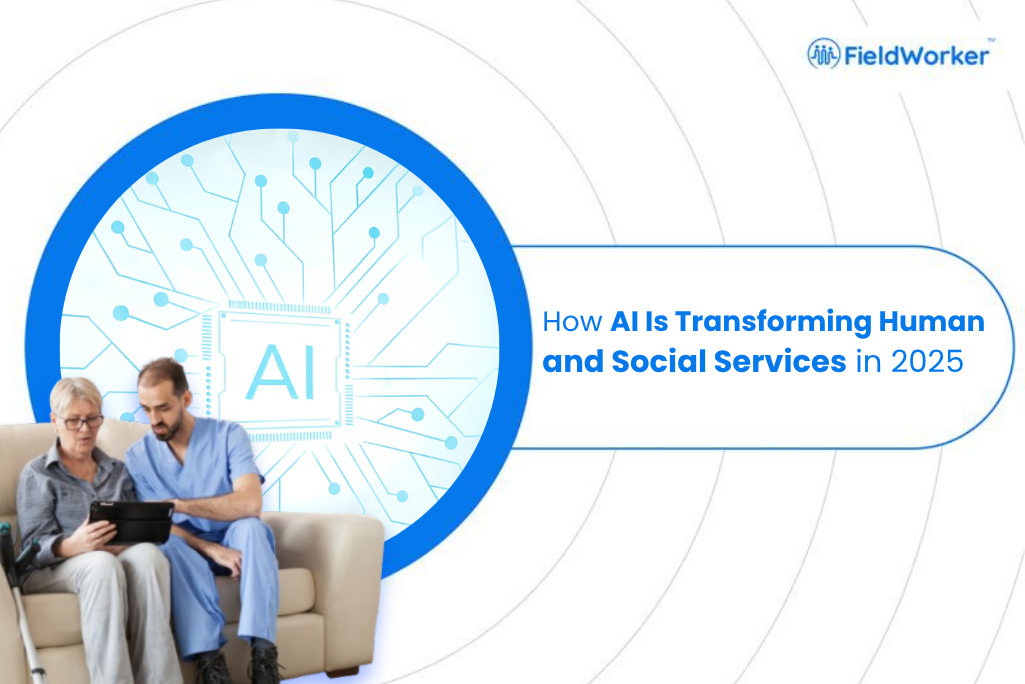Social Workers today are moving across houses, cities and case folders to ensure care services are delivered on time, to the right person and with as much human presence possible. While some need assistance for their elderly parents, others look for support that will help them self-direct themselves again.
It is no doubt that the social care industry runs on trust, human relations, and connections. And with artificial intelligence bombarding every aspect of life today, we often think, will AI take over this industry that is so in-tune with human connection?
This blog explores how AI is transforming human and social services in 2025. It breaks down AI in social services and walks through the thoughts you might have as a social service professional. As a matter of fact, AI is here to stay, and the best way forward is by understanding it and using it where it works best.
Where Social Care Technology Falls Short today?
Social care technology, better addressed as care management technology, has been a recent technological implementation in the social care industry. Let’s understand the difference this implementation has made with Nina’s story, a case manager based in New Jersey.
“Back in the day,” shares Nina, a case manager today based in New Jersey, “I used to write my own papers. Whenever I visited a client, I had three books that helped me keep a record of my service. I had a notebook to draft my cases, another logbook to record my visits and another guide or manual the humans service agency handed me at the time, for any details or instructions I needed to go through for my job.” She added, “the toughest part of my job was definitely keeping all my notes updated with every detail, and often times I’d forget about the visit times and have to follow up with calls”.
Nina’s experience is the foundational problem of social services: a constant battle between piles of paper, caseloads, and multiple tools for different needs.
Even though agencies today use care management tools, most of these tools are not systematically integrated, nor are they built to accommodate the dynamic regulatory environment of the social care industry.
While they solve and ensure error-free billing, documentation and even schedule organization, most often miss out on communicating the outcomes of these processes that can be leveraged for agency level decision making.
What is the role of AI in Social Services?
Artificial Intelligence by function is a powerful pattern recognizing engine that predicts or forecasts outputs from data. In this regard, AI in social service essentially comes forth as administrative support.
It manages your documentation, organizes your files, pre-fills forms to eliminate data entry misses or errors, and even ensures your visit schedules are well organized and communicated to your entire support team. But is that all?
In 2025, AI continues to grow with approximately 378.8 million active users. Albeit with different purposes, AI is essentially being used to lighten the cognitive load of individuals and, on a bigger scale, companies. This way they have more time to invest in complex and relational work and not backend administrative work.
Yet AI in social service is far from becoming a social service GPT due to the dense compliance systems tightly regulated by authorities.
AI in Action: Transforming Social Services in 2025
Although the demand for care support, caregiving, home care and social services continues to rise today, the reality is the shortage of professionals in the immediate market. While in some cases this shortage gets distributed in multiple shifts amongst care teams, the extra work, hours, resulting burnout are incurable so many decide to leave the field altogether.
While the government and authorities are promoting the use of technology, there are a few interesting AI innovations in the field of human and social services. Mentalyc is an example,
| Tool | Primary Function | Key Features |
| Mentalyc | Automated Clinical Documentation & Note-Taking for mental health professionals (often AI-powered). | Automates clinical notes (like progress notes and treatment plans) from session recordings while maintaining compliance (e.g., HIPAA). |
Additionally, an all-in-one case management platform like FieldWorker.ai easily integrates across a variety of tools and acts as a care management hub where every case detail – from inception to claim submission can be organized in a systematic manner.
Tools and platforms like FieldWorker.ai help:
Will AI replace social workers in 2025?
This is a question, professionals across industries and even hierarchies are reflecting upon. To answer this, let’s circle back and recall that social care and human service is an industry that revolves around trust, human relationships, and connections.
While AI has the capacity to fasten processes by reducing data entry frequency, data updating, and the cognitive load of searching for information, it lacks human emotions, the most important element to ensure your care services are contributing towards the growth and development of your client.
Imagine a sophisticated AI system predicting that a client with IDD is at a 70% risk of needing higher support levels within the next six months. The AI delivers the data, but it is the social worker who must:
- Interpret the ‘Why’:
Dive into the subtle, qualitative details the AI missed, a recent family conflict, a change in neighborhood routine, or a non-verbal cue of distress. - Translate to Compassion:
Sit with the client and their family, acknowledge the fear and anxiety that comes with change, and build a new, person-centered plan based on their desires, not just a data point. - Mobilize the Network:
Facilitate difficult conversation, advocate for new funding, and coordinate the necessary human resources.
While AI is a powerful supportive tool, it is the social worker who delivers care to the individual, ensuring a true human-to-human connection, and adapting to their unique needs.
Using AI in Your Social Work Practice and Agency
Here are 2 quick ways you can start using AI in your agency’s workflows.
1. Delegate your Repetitive Tasks to AI
Start small by delegating your most repetitive administrative tasks to smart tools.
2. Experiment with Voice to Text Features
Documentation is essential, but drafting narratives that link service delivery to client outcomes is time-consuming.
By starting small and prioritizing ethical considerations, US professionals can leverage AI as a powerful amplifier for the essential social work they do.

